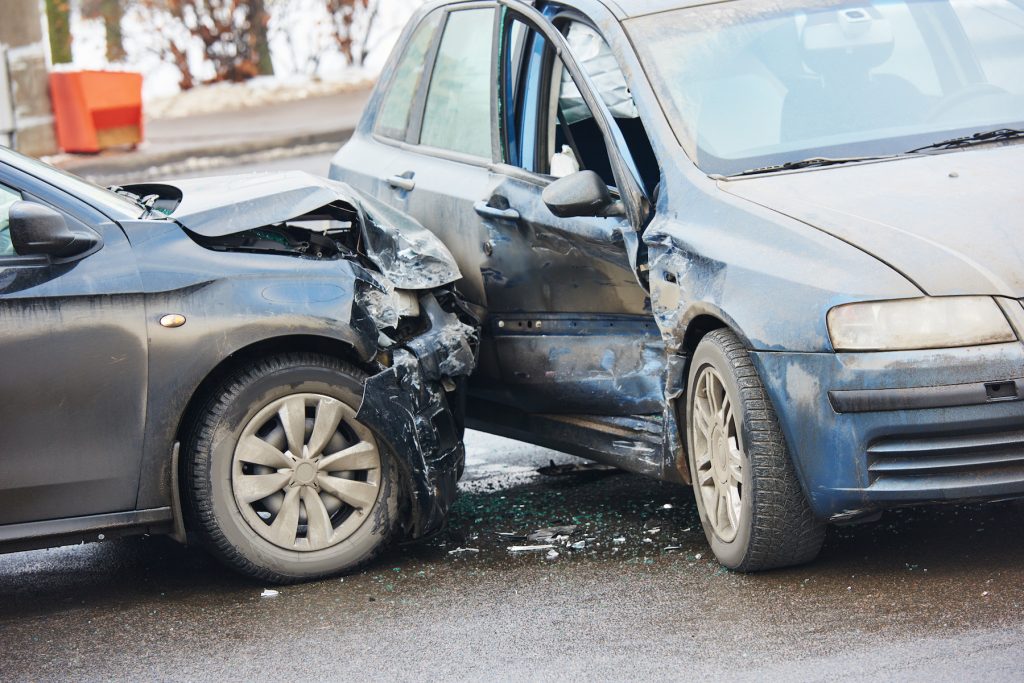We’ve all been there, sitting in our car in a left turning lane waiting impatiently for the never ending traffic to pass or the light to turn yellow so that we can finally make our left turn. We’ve possibly even waited through a couple sets of light changes before we finally get to the front of the line and when that opening comes, we are gone! We’ve also been on the other side, heading straight, seeing the light turn yellow and without a second thought to applying our brakes, continuing forward and possibly hitting the gas to make sure we make it through. Unfortunately, it is this type of situation that results in one of the most common accidents I deal with and often resulting in serious injuries. So, who’s at fault if a collision results? The driver turning left or the driver heading straight through? The answer will depend heavily on the facts of each case.
Personal Injury Law: Car Accidents
The driver of the vehicle turning left is going to have the heavier burden of proof. The driver going straight is considered to be in the dominant position and the driver turning left in the servient position. The law requires the vehicle turning left to “yield the right of way to traffic approaching from the opposite direction that is in the intersection or so close as to constitute an immediate hazard”. However, once the vehicle turning left has yielded as required, “the driver may turn the vehicle left, and traffic approaching the intersection from the opposite direction must yield the right of way to the vehicle making the left turn.” In other words, if there is enough room for the driver turning left to safely turn and the driver proceeds, the driver heading straight has an obligation to yield to the driver turning left.
Where the light has turned yellow, the Court must also look at the law related to yellow lights. Contrary to most driver’s understanding, a yellow light does not mean slow down and it certainly does not mean gun-it through before the light turns red. A yellow light actually means stop, unless the stop cannot be made in safety (see s.128 of the Motor Vehicle Act). So where the light has turned yellow, the Court must determine if the light turned yellow before the driver heading straight entered the intersection and if after the light changed that driver could have safely stopped his or her vehicle.
Kelowna ICBC & the Driver’s Obligation
Some other laws that often come into play in left turn cases include each driver’s obligation to keep a proper look out, drive with due care and attention, not to exceed the speed limit, driving appropriately for the weather conditions and not to enter an intersection at a red light.
In some cases the Court will find one party 100% at fault and in other cases both parties will be found to be at fault and the Court will apportion a percentage of liability to each driver.
In a case where the light was yellow and the driver heading straight was at least 140 feet from the intersection when the light turned yellow, the driver turning left saw the other vehicle but reasonably believed it had enough time to stop, the Court found the driver heading straight to be 100% at fault (see Lam v. Cumming 2002 BCSC 1413).
In another case where the Court found the driver turning left to be at fault for not yielding the right of way to the driver heading straight, the Court also found the driver heading straight to be at fault for excessive speeding. In that case the Court apportioned 65% fault to the driver turning left and 35% fault to the driver heading straight (see Cavezza Estate v. Seifred 2009 BCSC 447).
Court Case: Who’s at Fault?
In a similar case the Court found the driver turning left to be 80% at fault and the driver heading straight, but slightly over the speed limit on a yellow light to be 20% at fault (see Slaughter v. Sluys 2008 BCSC 1012).
In a situation where the evidence established that the light had turned red before the driver heading straight entered the intersection, the straight through driver was found to be 100% at fault (see Frankson v. Myre 2008 BCSC 795).
In a case where the collision occurred at the same moment as the traffic light turned red, the Court divided liability equally (see Tejani (Guardian ad litem of) v. Greenan 2001 BCSC 803).
Involving Kelowna Personal Injury and ICBC Lawyers
If you find yourself in an accident as a result of a left hand turn, try to get as many names and numbers of witnesses as possible. If you are issued a ticket by a police officer you should give serious consideration to disputing the ticket. Also, it is a good idea to consult a lawyer before providing any statements to ICBC as the information contained in the statement may be used against you. As a driver in either position you may be found 100% at fault, partially at fault or not at fault. Prevention is always the best course so be sure to exercise caution when making a left hand turn or proceeding through a yellow light at an intersection.
*Important Note: The information contained in this column should not be treated by readers as legal advice and should not be relied on without detailed legal counsel being sought.
If you have further questions about ICBC or Personal Injury Law in Kelowna, contact our team of experienced ICBC and Personal Injury Laywers. Our team has years of experience devoted to working with clients on their personal injury matters.

